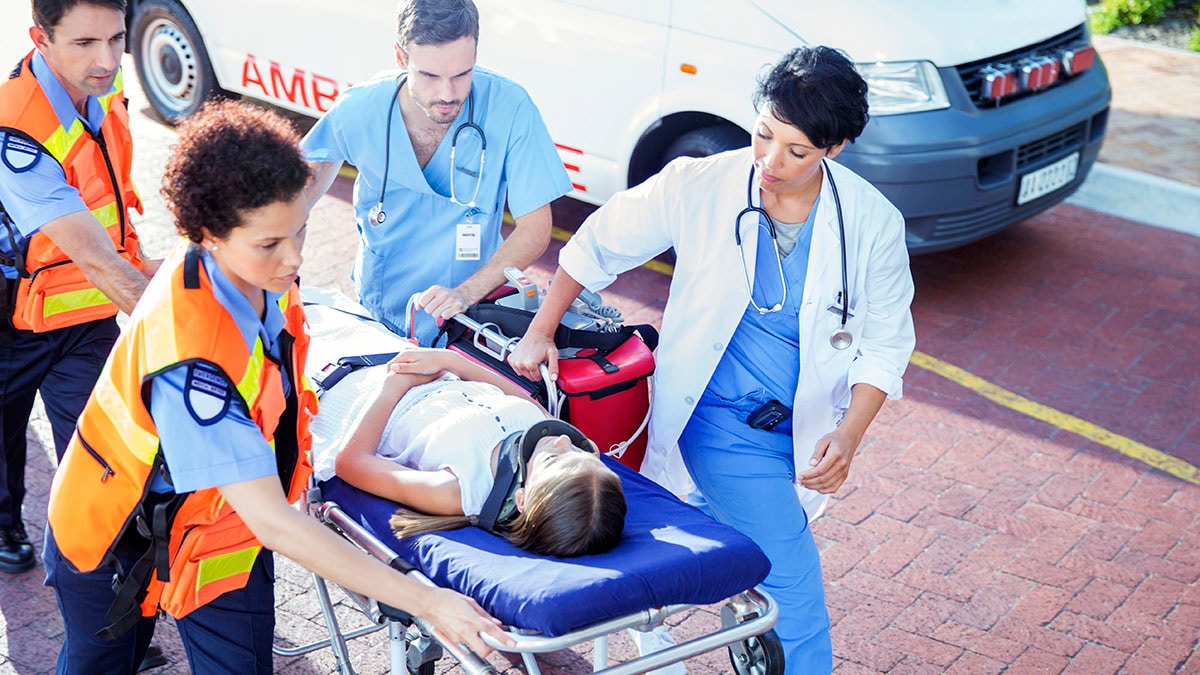About
- Work practices should be established and followed when illicit fentanyl is known or potentially present on patients.
- Personnel in healthcare facilities who perform jobs where illicit fentanyl is reasonably anticipated to be present should receive special training.

Overview
The Centers for Disease Control and Prevention (CDC) has no occupational exposure data on illicit fentanyl for workers potentially exposed in the course of their job duties. There are no established federal or consensus occupational exposure limits for illicit fentanyl. These recommendations are based on the reported toxicity and the chemical and physical properties of illicit fentanyl; CDC’s National Institute for Occupational Safety and Health (NIOSH) guidance for other similar chemicals (or in the same family); recommendations from previous NIOSH health hazard evaluation reports about law enforcement personnel exposures to other drugs and chemicals; and the basic principles of industrial hygiene. As new research becomes available, these recommendations will be updated.
Best practices
Work Practices1
The following work practices should be established and followed when illicit fentanyl is known or potentially present on patients presenting for healthcare with or without symptoms of opioid exposure. These work practices are recommended along with decontamination procedures and use of personal protective equipment (PPE) noted on a corresponding page in the table of contents above.
- Healthcare facilities that receive victims from EMS responses should work with EMS providers to coordinate communication of information about the response. Information including details related to potential contamination of the victims and providers can help the healthcare facility better assess whether decontamination is necessary and coordinate medical evaluation and treatment.
- When first encountering a patient, the healthcare personnel should assess the risk for hazards, and determine whether the presence of illicit fentanyl is suspected. Gathering relevant information from the patient, emergency medical transport staff, or other persons accompanying the patient is important when possible.
- Healthcare personnel should follow established work practices as well as these recommendations:
- Staff should recognize when they are entering and leaving potentially contaminated areas.
- Do not eat, drink, smoke, or use the bathroom while working in an area with known or suspected illicit fentanyl.
- Do not touch the eyes, mouth, or nose after touching any surface potentially contaminated with illicit fentanyl.
- Wash hands (or other unprotected skin) with soap and water immediately after a potential exposure and after leaving an area where illicit fentanyl is known or suspected to be present to avoid potential exposure and cross contamination. Do not use alcohol-based hand rubs to clean contaminated skin in situations where exposure to illicit fentanyl is suspected. Use of such hand rubs could increase absorption through the skin.
- Avoid performing tasks (such as shaking potentially contaminated clothing or bedding) that might aerosolize illicit fentanyl that is present on the patient or in the environment because it might increase risk of exposure to healthcare personnel. Activities that aerosolize illicit fentanyl require the use of higher levels of PPE as recommended below and should be conducted by appropriately trained personnel in accordance with facility policies and procedures.
- Removal or changing of a patient’s clothes or bedding might be necessary during the care of a patient that is suspected or confirmed to have used or been exposed to illicit fentanyl. These materials should be handled in a manner which minimizes contact with the materials, dispersion of any illicit fentanyl which may be present, and production of any aerosols from the materials. If powder or dust is identified on clothing, a wet wipe should be used while wearing the PPE as recommended below to remove it. The materials should be carefully placed in labeled durable 6 mil polyethylene bags and segregated from other laundry until they are laundered.
- Notify other healthcare personnel involved with the care of the patient of the potential for illicit fentanyl contamination until the patient, room, work surfaces, and laundry are decontaminated.
- Launder clothes worn by healthcare personnel caring for a patient that is suspected or confirmed to have used or been exposed to illicit fentanyl at the healthcare facility if in-house laundry facilities are available. Clothing should be carefully placed in labeled durable 6 mil polyethylene bags and segregated from other laundry until they are laundered. If a healthcare facility does not have in-house laundry facilities, the potentially contaminated linens or uniforms should be segregated and identified when sent for laundering.
- If collection of unknown substances suspected to be illicit fentanyl is needed in the healthcare setting, develop a specific plan to perform those types of collections in accordance with the policies and procedures of the facility and applicable law enforcement. Personnel specifically trained to perform such collections should do so while using the PPE recommended below. Never handle illicit fentanyl without using the appropriate PPE.
- Staff should recognize when they are entering and leaving potentially contaminated areas.
Training
Personnel in healthcare facilities who perform jobs where illicit fentanyl is reasonably anticipated to be present should receive special training in how to conduct a risk assessment and demonstrate an understanding of the following elements. Whether as part of a formal or informal triage process, healthcare personnel should incorporate the following training elements into the initial part of the patient assessment process to help guide subsequent actions related to minimizing potential exposure to illicit fentanyl:
- Potential exposure routes for illicit fentanyl.
- How to recognize the signs and symptoms of opioid exposure (applicable to patients and other healthcare personnel).
- How to recognize potential illicit fentanyl contamination in patients.
- When to use PPE; what PPE is necessary; how to properly put on, use, take off, dispose of, and maintain PPE; and the limitations of PPE.
- When and how to decontaminate a patient.
- [1] Standard precautions are used for all patient care (https://www.cdc.gov/infection-control/hcp/basics/standard-precautions.html). Standard precautions are intended to protect healthcare personnel from infection and prevent the spread of infection from patient to patient.
